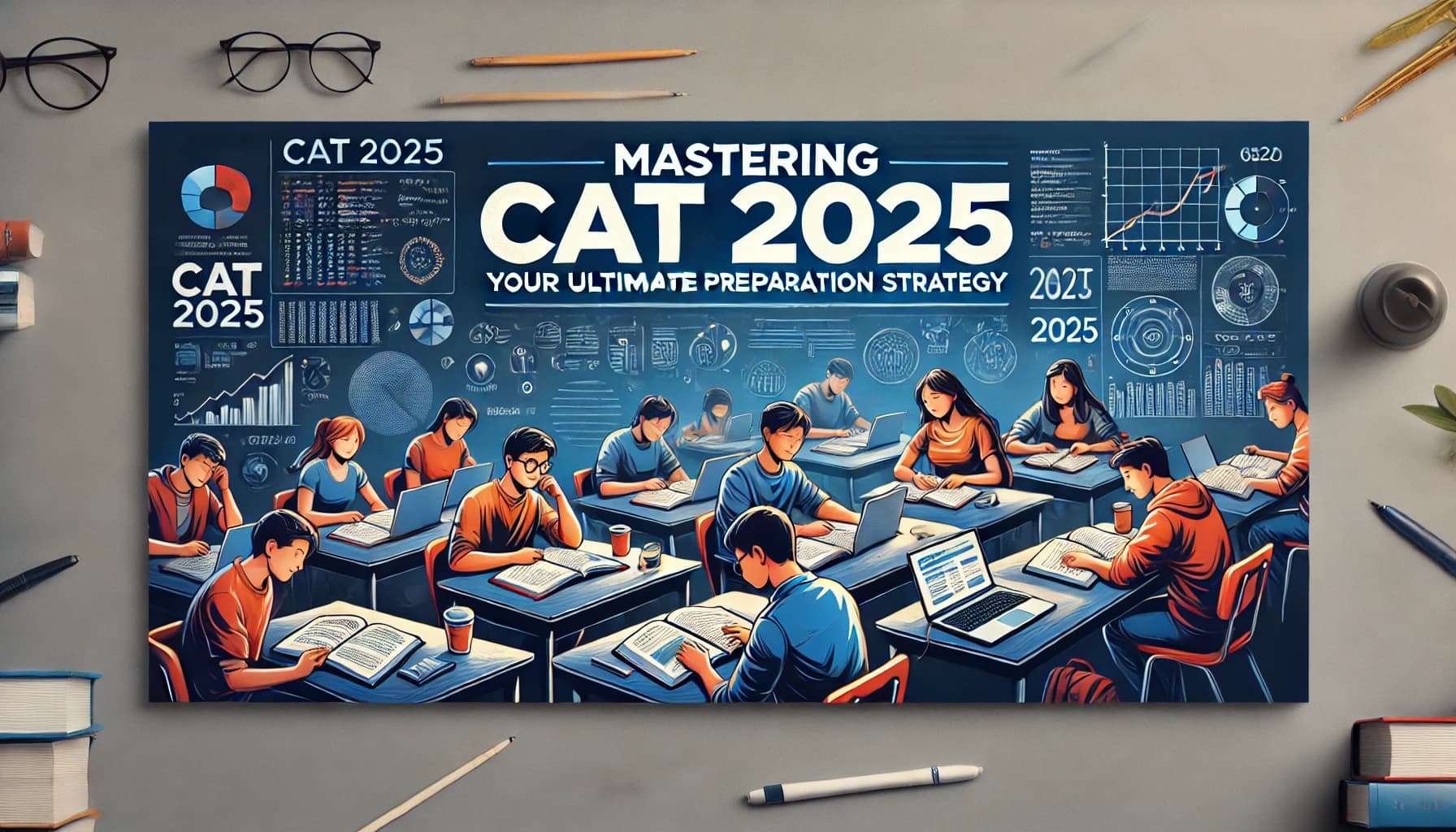Mastering CAT 2025: Your Ultimate Preparation Strategy for Success

The Common Admission Test (CAT) is one of the most competitive exams for MBA aspirants in India. Conducted by the Indian Institutes of Management (IIMs), CAT is a gateway to prestigious business schools across the country. With lakhs of students appearing every year, cracking CAT requires a well-structured preparation strategy.
Understanding the CAT Exam Structure
Before diving into the preparation strategy, let’s understand the structure of the CAT exam. It consists of three major sections:
- Quantitative Ability (QA): Tests mathematical and problem-solving skills.
- Verbal Ability & Reading Comprehension (VARC): Evaluates English proficiency, comprehension, and reasoning skills.
- Data Interpretation & Logical Reasoning (DILR): Assesses your analytical thinking and logical approach.
Each section has a time limit, and managing time effectively is crucial to maximizing your score.
Creating a Structured Study Plan
A well-structured plan is essential for acing CAT. Here’s how you can create an effective preparation strategy:
1. Assess Your Strengths and Weaknesses
- Begin by taking a diagnostic test to understand your current performance.
- Identify strong and weak areas across QA, VARC, and DILR.
- Allocate more time to weaker sections while reinforcing strengths.
2. Set Realistic Study Goals
- Divide your preparation into phases:
- Phase 1 (Foundation Building - 3 months): Strengthen concepts and focus on clarity.
- Phase 2 (Practice & Speed Building - 3 months): Solve multiple question types and improve accuracy.
- Phase 3 (Mock Tests & Final Prep - 2 months): Focus on full-length mocks and time management.
Section-Wise Preparation Strategy
Quantitative Ability (QA)
Quantitative Aptitude is often considered challenging due to its vast syllabus. A structured approach includes:
- Building Strong Fundamentals: Ensure clarity on key topics like arithmetic, algebra, geometry, and number systems.
- Concept-Based Learning: Instead of rote memorization, focus on understanding formulas and their applications.
- Practice & Shortcuts: Learn quick calculation techniques, approximation methods, and mental math tricks to save time.
- Time-Based Problem Solving: Set a timer while solving practice questions to improve speed.
Recommended Books & Resources:
- Quantitative Aptitude for CAT by Arun Sharma
- How to Prepare for Quantitative Aptitude for CAT by Nishit K Sinha
- Online platforms like iQuanta, Unacademy, and Byju’s.
Verbal Ability & Reading Comprehension (VARC)
VARC tests your reading speed, comprehension skills, and verbal reasoning ability. Here’s how you can excel:
- Read Regularly: Develop a habit of reading newspapers, editorials, and articles from sources like The Hindu, The Economist, and The Guardian.
- Improve Vocabulary: Maintain a word list and learn new words daily. Use apps like Magoosh or Anki for vocabulary building.
- Practice RC Passages: Attempt diverse reading comprehension passages to improve speed and retention.
- Verbal Ability Practice: Solve para jumbles, summary-based questions, and odd-one-out exercises regularly.
Recommended Books & Resources:
- Word Power Made Easy by Norman Lewis
- How to Prepare for Verbal Ability and RC for CAT by Arun Sharma & Meenakshi Upadhyay
Data Interpretation & Logical Reasoning (DILR)
DILR is often the trickiest section in CAT due to its unpredictability. A good strategy includes:
- Practice Different Types of DI Sets: Tables, charts, graphs, and caselets.
- Logical Reasoning Techniques: Solve puzzles, seating arrangements, blood relations, and statement-based questions.
- Improve Calculation Speed: Use approximation techniques and mental calculations to solve DI sets faster.
- Solve Previous Year Questions: Understanding past patterns helps in identifying question types.
Recommended Books & Resources:
- How to Prepare for Data Interpretation & Logical Reasoning for CAT by Arun Sharma
- Online resources like iQuanta and CATKing.
The Role of Mock Tests & Analysis
Mock tests play a crucial role in CAT preparation. Here’s how to utilize them effectively:
- Start Early: Begin taking mocks at least 4-5 months before the exam.
- Analyze Performance: Post-mock analysis helps identify weak areas.
- Improve Accuracy: Work on reducing errors and avoiding silly mistakes.
- Experiment with Strategies: Try different approaches to find what works best for you.
Recommended Mock Test Providers:
- IMS, Career Launcher, TIME, and iQuanta offer high-quality mocks simulating actual CAT difficulty.
Time Management & Stress Handling
Time management is key to excelling in CAT. Here’s how you can optimize your preparation:
- Create a Timetable: Allocate dedicated slots for each section.
- Follow the 2-Minute Rule: If a question takes longer than 2 minutes, move on and revisit later.
- Stay Consistent: Small, daily efforts are more effective than last-minute cramming.
- Practice Mindfulness: Meditation, yoga, or short breaks help in stress management.
Common Mistakes to Avoid
- Ignoring Weak Areas: Focus on improving weaker sections rather than just practicing strong areas.
- Skipping Mock Analysis: Reviewing errors is crucial for improvement.
- Relying Only on Theory: Practical application through solving questions is more beneficial.
- Overloading Yourself: Maintain a balanced approach to avoid burnout.
Final Words: The Road to Success in CAT 2025
CAT is not just about intelligence but also about strategy, perseverance, and consistency. Following expert-backed preparation plans, practicing regularly, and staying motivated will help you achieve your dream B-school.
Stay disciplined, keep pushing forward, and remember—each step takes you closer to success. Good luck!